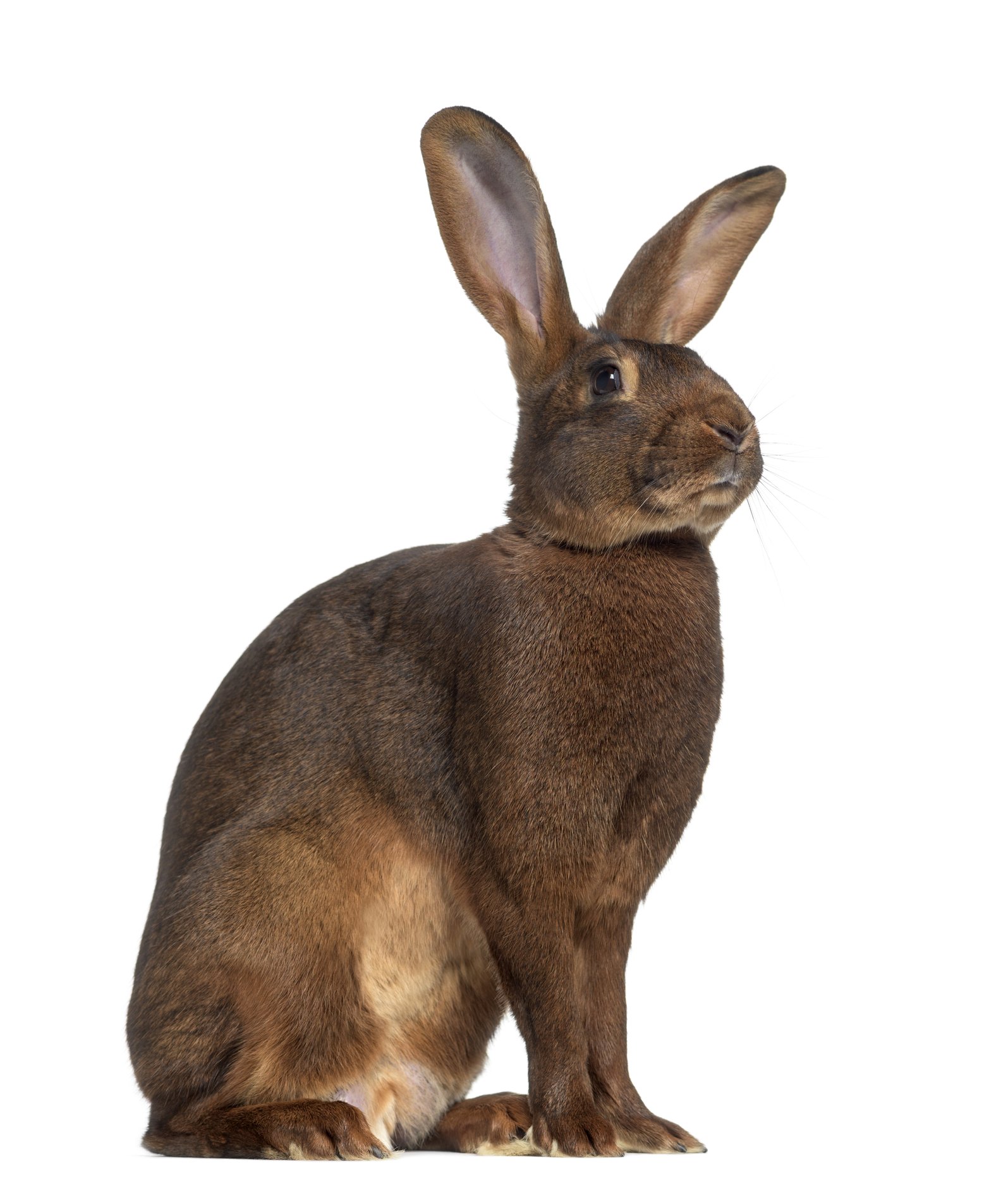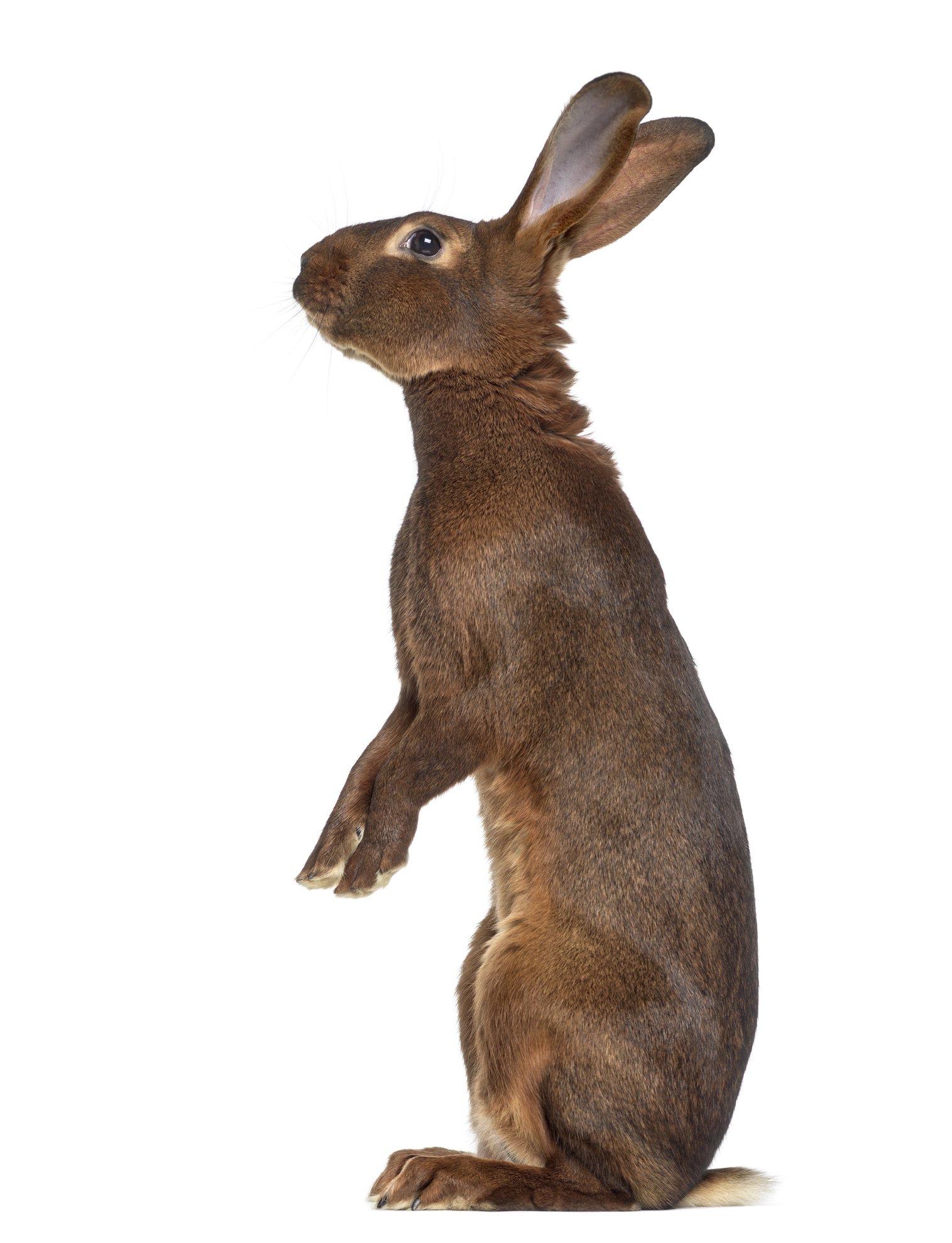A Belgian Hare rabbit is a fancy breed resembling a hare than a bunny. Because of its racy and fine-boned structure, it is famous in show tables. Although this breed is excellent in shows, it may be unsuitable for other owners. You may find it more skittish and nervous, making it more challenging to take care of. If you want a Belgian Hare rabbit, keep reading and learn more about the breed!

Facts about Belgian Hare Rabbit
|
Body Size |
Large |
|
Body Weight |
6 lbs to 9 lbs |
|
Body Shape |
Full arch |
|
Lifespan |
7 to 11 years |
|
Colors |
Rufus red, chestnut, black, and tan |
|
Rarity |
Rare |
|
Similar Breeds |
English Spot, Flemish Giant |
|
Best Suited for |
Experienced rabbit owners |
|
Origin |
Belgium |
Background and History
The Belgian Hare Rabbit appeared after breeders made a rabbit that resembled a hare. They developed the leporine rabbit breed by selectively breeding domestic and wild rabbits. It was created in Flanders, Europe, during the 18th century. Mr. W. Lumb and Mr. B. Greaves imported leporine from Belgium and Germany to England during the 1870s. To improve the features of the bunnies, they developed them into two types. The larger ones were the Patagonians. We know them as Flemish Giants today. At the same time, the other one was called the Belgian Hare. The first standards for the breed were written in 1882. As mentioned in the 1889 standard, the breeders made the breed look racier.
It was in 1888 when E.M. Hughes of Albany, New York, brought the breed to the United States. Through the efforts of Mr. Richardson and Mr. Fenton, the Belgium Hare was promoted in the country. In the same year, the Belgian Hare Boom happened. Breeders imported the bunnies at hefty prices, ranging between $500 to $1000 each. But in 1917, the boom ended after the breeders tried to develop the fancy breed into a meat type. The rabbit lost its alert and clean-cut appearance.
In 1972, the American Belgian Hare Club was formed. ARBA only recognized the Rufus red variety. But BRC acknowledged Black, Tan, and Rufus red. As of now, the breed has become less popular primarily because it took more work to breed. Furthermore, the Livestock Conservancy already listed the Belgian Hare rabbit as “Threatened”.
Features of Belgian Hare Rabbit
A Belgian hare rabbit has features similar to a hare. Its fully-arched body can weigh up to 6 lbs to 9 lbs. Unlike rabbits, its body is long and slender. It also has long, agile legs with well-rounded hindquarters. The front feet of this bunny is long and perfectly straight. On the other hand, its hind feet are fine, flat, and long. Since it is a racy and fine-boned breed, many breeders called it the racehorse of the rabbits. When it comes to its appearance, the Belgian Hare resembles the hare. It has a long head with a straight tail. Tall and slightly wide, its ears stand erect at its head.
Even the coat of the bunny looks like that of the hare. It is short and glossy with a deep-rich red color and a black-waved tick. ARBA only recognizes one color of the breed: the Rufus red. Meanwhile, BRC accepts other colors besides the Rufus red. They are black and tan.

Temperament and Behavior
One of the most intelligent breeds, you can train a Belgian Hare to recognize its name. It is also sweet and enjoys petting. However, it is not for everyone because of nervousness. A sudden movement and noise can frighten the bunny, making it jump high and run in a frenzy. Thus, the rabbit becomes prone to injuries. Most owners breed them for show purposes and not as pets. But as long as you win its trust, it will be easier for you to care for it.
Although this breed can be responsive to handling, it is not recommended to be picked up by children. Aside from its large size, it can also become skittish and kick suddenly if mishandled. You must also provide ample space because of its energetic nature. Thus, this breed is unsuitable for those living in small apartments.
Breeders announce their arrival before opening doors to decrease the bunny’s nervousness. They also install loud fans and play music all day to get the bunny used to the noise. A Belgian Hare requires special care. Thus, it is suitable for experienced owners with large spaces.

Grooming Belgian Hare Rabbit
Grooming a Belgian Hare rabbit is easy because of its short fur and glossy coat. Instead of using a brush, you can use your bare hands to remove the loose furs. Never pluck the fur since your pet can get hurt. You should never bathe it if there is a dirty spot in your pet’s coat. Washing a rabbit can result in stress or a heart attack. You can make its coat shiny by applying a conditioner recommended by the vet. Put a small amount of conditioner in your hands and gently rub them in your bunny’s coat.
You must also ensure that your bunny’s nails are trimmed. Long and bent nails can result in rabbit injuries. Before cutting a Belgian Hare’s nails, ensure that it is calm. Hence, you can prevent it from moving and kicking. If your pet is nervous, you can put a towel over its head to calm the rabbit. Since this breed is energetic, having someone holding it is helpful. Only trim the bunny’s nails short since you may cut the quick.
Checking your rabbit’s teeth regularly will prevent it from having overgrown teeth. A bunny with overgrown teeth may suffer from a wounded cheek and mouth. You must provide chew toys for your pet, helping to trim its teeth. Feeding it with hay will keep its teeth short and healthy. You can also give it some twigs, but ensure they are non-toxic. You can check this video below to learn how to groom a Belgian Hare rabbit.
Proper Diet
Like other rabbit breeds, a Belgian Hare rabbit requires 70% hay. Fiber is essential for your pet to have a healthy gut. Hay also improves the gut’s motility, helping the bunny to pass stool easily. However, ensure that you give it fresh and high-quality hay. For young Belgian Hares, alfalfa is recommended. But once they turned adults, you should replace the alfalfa with Timothy hay.
To keep your bunny healthy, you must also provide it with leafy greens. They are rich in nutrients, ensuring your pet has enough vitamins and minerals. However, not all leafy greens are suitable for your pet. Some are toxic and can cause gases to your pet’s stomach. Prevent giving your bunny iceberg lettuce, potatoes, and mushrooms.
You can also provide high-quality pellets for your rabbit as a supplement. In choosing suitable pellets, ensure they are high in fiber and protein. Avoid feeding too many pellets to your pet since they can make it overweight. Also, don’t give pellets mixed with nuts and other treats.
Treats to your pet’s diet can add variety to taste and texture. But you should pick the proper treats for your bunny. Giving it too much sugar can cause an imbalance in its gut’s flora. Fruits can be given to rabbits as treats. Apples with no seeds, berries, and melons are good choices. But as a reminder, give them to your bunny sparingly.
Habitat
As an active breed, you should provide a large hutch for a Belgian Hare rabbit. The ideal size of its enclosure is a 24 x 18-inch floor. It must be about 24 inches high, giving enough space for your bunny to hop. To prevent broken toes and nails, use solid flooring instead of wire. The solid flooring must be covered with thick bedding to comfort your bunny. You can use shredded paper or oat straw.
You can also provide automatic water system fonts or water bottles at the side of the bunny’s cage. If you want your pet to have enough space to exercise, you can place corrals and runs on the floor of the barns. Since a Belgian Hare should stay outdoors, ensure that its hutch is protected from too much heat or cold. These bunnies are sensitive to extreme temperatures. You must also keep it away from other household pets like dogs since it can quickly get nervous.
Health Issues of Belgian Hare Rabbit
Pododermatitis
Pododermatitis, commonly known as sore hocks, is common in a Belgian Hare rabbit. It is because this breed has delicate feet. The bunny’s heels become too swollen, leading to infection, amputation, or euthanasia. Causes of pododermatitis include wire-floored cages, unsanitary conditions, and obesity. Overgrown nails and arthritis may also lead to this condition.
The symptoms of pododermatitis include loss of appetite and walking abnormally. Your pet may also have inflamed feet and thickening on the skin of the feet. If an infection is present, your bunny may be given antibiotics. Anti-inflammatory pain relief and wound management are vital to keeping your pet comfortable.
Ear Mites
Belgian Hares may also experience ear mites. It is a condition common in rabbits caused by the parasite Psoroptes cuniculi. The parasites can be found in one ear or both ears. They may also spread on the genital regions, abdomen, neck, and head. Symptoms of ear mites are itching to the ear, neck, and head, shaking, and hair loss. Your pet may also experience ear infection, pain, and crusty exudate in the ear canal. If ignored, your pet may lose its hearing. To treat ear mites, Ivermectin or Selamectin may be given by the vet.
Frequently Asked Questions
How much does a Belgian Hare rabbit cost?
Compared to other domestic rabbit breeds, a Belgian Hare rabbit costs more. Its average cost ranges between $150 and $500. The price may depend on the bunny’s pedigree or show-worthiness. A bunny from a rescue organization is less costly than one from a reputable breeder.
Are Belgian Hares suitable pets for first-time owners?
No. Although Belgian Hares are sweet, they can get skittish if not appropriately handled. Aside from that, they are nervous, causing them to be in a frenzy while inside their hutches. It takes an experienced rabbit owner to take care of the Belgian Hares properly.

Conclusion
Although a Belgian Hare rabbit is intelligent, it is unsuitable for inexperienced owners. The nervousness of the bunny makes it prone to rabbit injuries. Instead of raising it as a pet, breeders prefer it to be a show rabbit. Many breeders desire this fancy breed because of its hare-like features and appearance.



